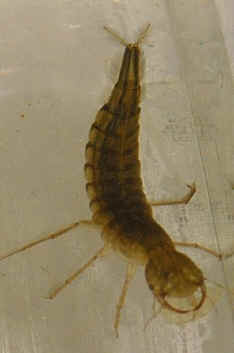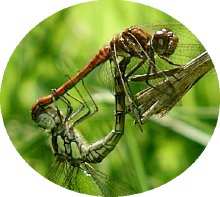| A lifecycle describes all the major growth
stages which take place during an individual's lifetime. It includes the production of new
members of the species. As the name suggests, lifecycles always follow a circular path,
arriving back at the same beginning. For example, tadpoles develop from frog spawn. They
grow into adults, passing through a series of stages. Adult frogs mate and the female frog
produces more frog spawn, from which new tadpoles develop. All living organisms reproduce and therefore have lifecycles. These can take
many different forms, although they usually follow the same general pattern. In general:
- Different stages in a lifecycle may look completely
different to each other.
In animals, a young stage that looks completely different to the adult is often
called a larva.
Great
Diving Beetle Larva |
Great
Diving Beetle Adult |
 |
 |
|
- Metamorphosis is where an immature animal,
which starts out looking very different to the adult, develops through various different
stages until it reaches the adult form. Examples of this are Great Diving
Beetles, frogs and butterflies.
|
- Different lifecycle stages last for different lengths
of time.
Adults of most species of Mayflies live for a very short length of time,
in some cases for only hours. In contrast, the Mayfly
larvae may spend one or more years developing in water before they become adult. At
the other end of the scale, a mature oak tree may live for several hundred years. It is a
seedling for only a very small part of this time.
|
- Different stages in a lifecycle often occur in
completely different habitats.
For example, adult dragonflies live in air, while the larvae live in water.

|

